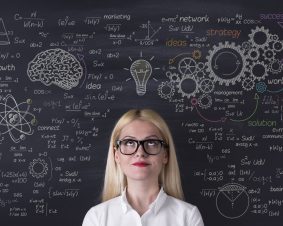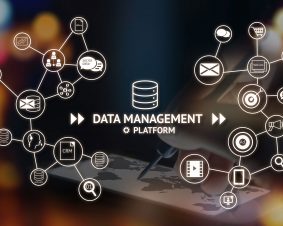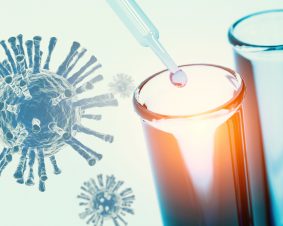 >
Spotlight May 2022: Nano-ghosts” – Risk assessment of submicron-sized particles in food biased towards fictional “nano”
>
Spotlight May 2022: Nano-ghosts” – Risk assessment of submicron-sized particles in food biased towards fictional “nano”
The European Commission has issued a ban on the colorant titanium dioxide in food. Titanium dioxide, which provides a nice shine and bright white color, can potentially damage genetic material.
We chose a review article from 2022 for the May 2022 Spotlight that addresses the risk assessment of food-grade titanium dioxide (E171) and the resulting potential bias against nanoscale titanium dioxide.
The authors are not interested in avoiding a ban on the use of E171 in food. Rather, it is important that the same bias against a fictitious “nano” hazard be avoided in the future.
The E171 case illustrates how the risk assessment of manufactured particulate food additives is potentially biased toward a supposed nanoscale particle hazard.
The authors summarize that, for example, subacute studies show that oral exposure to E171 does not cause toxicity in rodents or that chronic toxicity studies show that oral exposure to E171 does not cause carcinogenicity or other long-term adverse effects in rodents, even when tested at high doses.
The objective of this review is to reassess the literature on the toxicity of titanium dioxide particles, focusing on studies that are directly relevant to the evaluation of E171.
Original Publication:
Naegeli, H. and C. Gsell (2022). „“Nano-ghosts“: Risk assessment of submicron-sized particles in food biased towards fictional „nano“. EXCLI J 21: 279-299.

Weitere Spotlights
Spotlight March 2022: Safe Materials from Scratch – Safe-by-Design-Concept in action
In recent decades, German research on nanomaterials and new, innovative materials has been widely expanded by material safety aspects. European initiatives also pay significant attention to this: both the European Union (EU) Green Deal, and the Chemicals Strategy for Sustainability (CSS) aim to create a sustainable, climate-neutral economy with sustainable and safe chemicals and products, […]
Read moreSpotlight August 2021: Towards FAIR nanosafety data
In August we would like to present a paper on FAIR data. The paper published in Nature Nanotechnology in June 2021 summarises the challenges and provides recommendations for the efficient reuse of nanosafety data in line with the recently established FAIR guiding principles: findable, accessible, interoperable and reusable. This article summarises the know-how on the […]
Read moreSpotlight March 2021: Is Nanotechnology the Swiss Army Knife against Future Pandemics?
The COVID 19 outbreak has led to a fundamental rethinking of existing approaches to diagnosis, treatment, and prevention methods. The need for better and more efficient concepts is global and urgent. Nanotechnology has long been at the forefront of innovation and has led to advances in many different disciplines. Could this interdisciplinary field help develop […]
Read moreSpotlight October 2020: Nanosafety – Topic of the Future
Research on nanosafety is a driver of innovation as the spotlight in July has demonstrated. But furthermore, this research field is built on routine as well if researchers look for the “needle in the haystack”. In many areas the safety research initiates the development of new methods, e.g. for the determination of nanoparticles within exposed organisms via […]
Read more


